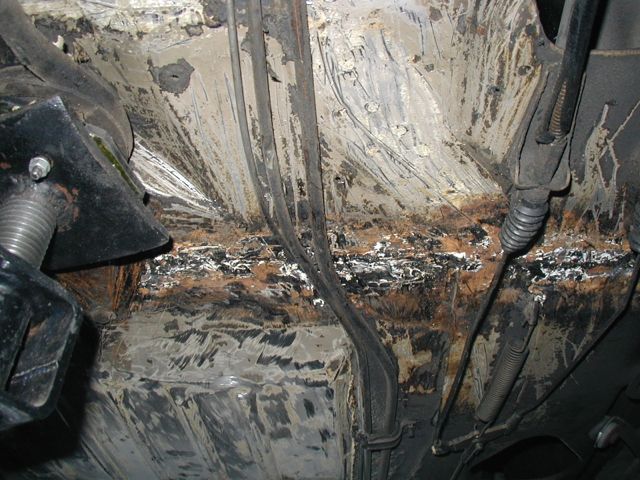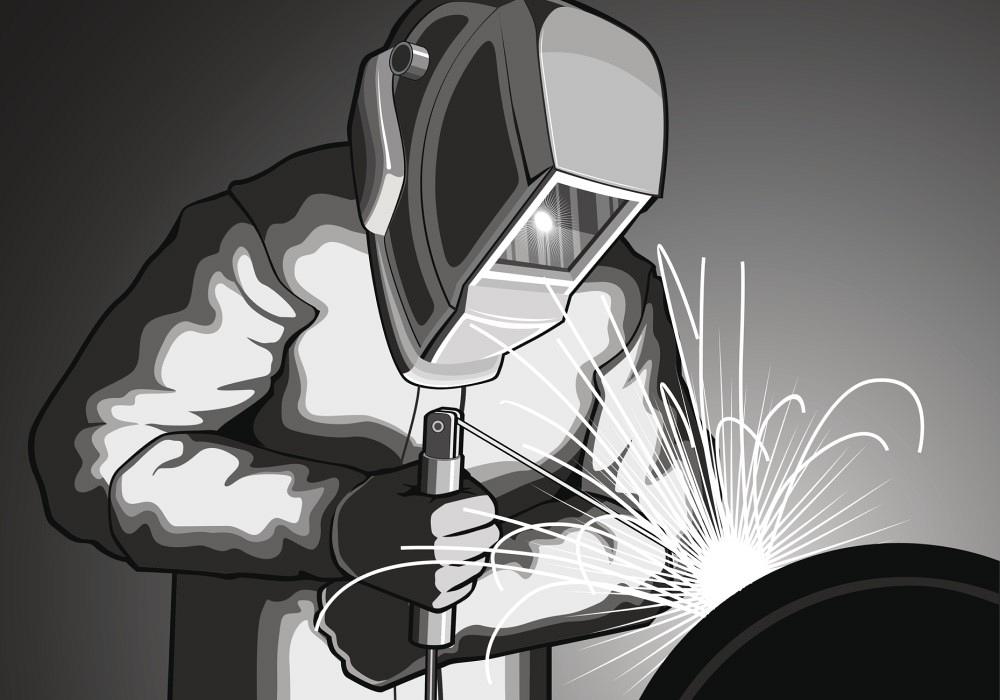Common Welding Fixing Issues and Just How to Address Them Efficiently
Welding repair services frequently encounter a variety of issues that can endanger the stability of the final product. Common troubles include inadequate penetration, porosity, and imbalance, to name a few. Each problem provides unique obstacles that call for certain methods for resolution. Understanding these concerns is important for welders intending to enhance their skills and end results. This conversation will certainly explore these common welding repair service problems and reliable approaches to address them.
Inadequate Infiltration
Insufficient infiltration takes place when the weld metal fails to completely fuse with the base material, resulting in weak joints and potential structural failures. This issue often comes from not enough warmth input, wrong electrode angle, or improper welding rate. Welders might run into poor penetration due to a mistake of the required specifications for a particular product density or kind. Furthermore, contamination on the base product's surface area can hinder effective bonding, worsening the issue. To resolve poor infiltration, welders must assure suitable settings on their equipment and preserve a clean work surface area. Regular evaluation of welds is suggested to determine any shortages early, enabling timely modifications and the avoidance of jeopardized architectural integrity in welded assemblies.
Porosity
Porosity is a typical defect in welded joints that materializes as tiny gas bubbles trapped within the weld metal. This problem can endanger the stability of the weld, causing reduced strength and potential failure under tension. Belgrade Fabrication. Porosity generally occurs from contamination, dampness, or improper welding methods, which allow gases to escape right into the molten weld pool. To resolve porosity, welders should assure correct surface area preparation, keep a tidy workplace, and use suitable welding specifications. Furthermore, choosing the appropriate filler product and securing gas can minimize gas entrapment. Routine inspection and testing of welds can assist determine porosity early, assuring prompt restorative activities are taken, thereby protecting the quality and dependability of the bonded structure
Imbalance
Misalignment in welding can emerge from different aspects, consisting of improper setup and thermal expansion. Comprehending the source is important for efficient resolution. Numerous improvement techniques are available to realign parts and guarantee architectural honesty.
Reasons of Misalignment
Welding misalignment usually stems from a selection of underlying issues that can jeopardize structural integrity. One main cause is incorrect fit-up of elements before welding, which can lead to voids and uneven surface areas. Variants in thermal development throughout the welding process can also cause distortion, specifically if the products being signed up with have different coefficients of growth. Furthermore, poor fixturing and clamping might fall short to hold parts safely in position, bring about activity throughout welding. Poorly conserved devices, including welding equipments and devices, may introduce variances in the weld bead, additional contributing to imbalance. Finally, driver error, stemming from not enough training or experience, can additionally play a considerable role in producing misaligned welds.
Improvement Methods Offered
Attending to imbalance effectively requires a mix of rehabilitative strategies tailored to the details concerns available. One common method is the usage of components or jigs to hold elements in the proper placement throughout welding, ensuring consistent alignment. Additionally, pre-heating the materials can help reduce distortion and enhance fit-up. For significant misalignment, mechanical realignment techniques, such as utilizing hydraulic jacks or clamps, can be utilized to remedy the placement before welding. Post-weld warm therapy may also be needed to relieve anxieties brought on by imbalance. Finally, mindful assessment and adjustment during the configuration stage can stop misalignment concerns from ending up being substantial issues, promoting a smoother welding procedure and enhancing overall architectural honesty.
Distortion
Distortion is an usual obstacle in welding that can emerge from numerous factors, including uneven heating & cooling. Understanding the root causes of distortion is crucial for applying efficient prevention methods. Resolving this concern not just boosts structural stability however additionally improves the total high quality of the weld.
Causes of Distortion
When subjected to the intense heat of welding, products often undertake adjustments that can result in distortion. This sensation mostly emerges from thermal development and tightening throughout the welding process. As the weld area warms up, the material expands; upon cooling, it contracts, which can develop internal stresses. In enhancement, irregular heating throughout a workpiece can aggravate these anxieties, leading to warping or flexing. The kind of product also plays a substantial role; metals with differing thermal conductivity and coefficients of development may respond differently, causing uncertain distortions. Inadequate joint design and inadequate try this site fixturing can add to imbalance throughout welding, enhancing the chance of distortion. Understanding these causes is necessary for effective welding repair work and avoidance methods.
Prevention Techniques
Effective avoidance techniques for distortion throughout welding emphasis on controlling heat input and making certain correct joint style. Keeping a consistent warm input helps to reduce thermal development and contraction, which can bring about distortion. Making use of methods such as preheating the work surface can likewise reduce the temperature gradient, advertising uniform heating. Additionally, selecting suitable joint designs, such as T-joints or lap joints, can boost security and reduce stress focus. Executing proper fixturing to safeguard the work surfaces in location additionally aids in keeping alignment during the welding procedure. Staggered welding series can disperse warmth extra uniformly, avoiding local distortion. By using these methods, welders can significantly reduce the possibility of distortion and enhance the total quality of their welds.
Cracking
Fracturing is a common issue encountered in welding repairs, often resulting from various factors such as inappropriate cooling prices, product selection, or insufficient joint preparation. The occurrence of cracks can greatly compromise the stability of my blog the weld, resulting in potential failures during procedure. To address this problem, welders should first evaluate the origin creates, ensuring that products are compatible and suitably selected for the particular application. Additionally, regulating the air conditioning rate during the welding procedure is crucial; rapid cooling can generate stress and anxiety and cause breaking. Proper joint layout and prep work likewise add to decreasing the threat. Implementing these strategies can improve weld quality and resilience, inevitably minimizing the likelihood of cracking in finished weldments.

Incomplete Blend
A significant issue in welding repair work is incomplete combination, which occurs when the weld steel does not adequately bond with the base material or previous weld passes - Belgrade Fabrication. This defect can result in weak points in the joint, possibly jeopardizing the stability of the welded framework. Factors adding to insufficient blend consist of insufficient warm input, inappropriate welding method, and contamination of the surfaces being joined. To resolve this problem efficiently, welders must assure appropriate pre-weld cleansing and surface area preparation, along with investigate this site adjust their welding criteria to achieve appropriate infiltration and blend. Normal evaluation throughout the welding process can additionally assist determine insufficient fusion early, allowing for timely restorative procedures to improve the total quality of the weld
Overheating
While welding repairs can improve structural honesty, overheating offers a significant difficulty that can lead to material destruction. Excessive warmth during welding can change the mechanical homes of metals, leading to decreased stamina, raised brittleness, and bending. This sensation is particularly essential in high-stress applications where architectural reliability is vital. Identifying getting too hot can involve visual examinations for staining or distortion, in addition to monitoring temperature throughout the welding procedure. To alleviate the threats connected with overheating, welders must use suitable techniques, such as regulating warm input, readjusting traveling speed, and using appropriate filler materials. Furthermore, executing pre- and post-weld warm therapies can help bring back product residential or commercial properties and improve the overall quality of the repair work, guaranteeing long-lasting performance and safety and security.
Often Asked Questions
What Are the Usual Indicators of a Welding Problem?

Just How Can I Test My Welds for Top quality?
To test welds for quality, one can utilize visual examinations, ultrasonic screening, and radiographic methods. Each strategy assures architectural honesty, determines problems, and validates adherence to specified requirements, inevitably boosting the dependability of the welded joints.
What Safety and security Preventative Measures Should I Take While Welding?
When welding, one need to focus on safety by putting on proper personal protective tools, guaranteeing proper air flow, securing combustible materials away, keeping a tidy work area, and being aware of surroundings to avoid mishaps and injuries.
Can I Repair a Weld Without Redesigning the Entire Joint?
Repairing a weld without redoing the whole joint is possible, depending on the damages (Montana Mobile Welding and Repair). Techniques such as grinding, including filler product, or making use of a welding procedure can effectively attend to specific flaws while maintaining the surrounding framework
What Devices Are Crucial for Reliable Welding Repair Works?
Crucial devices for reliable welding fixings consist of a welding machine, cable brush, grinder, protective gear, clamps, and filler materials. Each device plays a vital function in making certain top quality and safety during the repair work process. Porosity normally arises from contamination, dampness, or incorrect welding strategies, which allow gases to get away into the molten weld swimming pool. Badly kept equipment, including welding devices and tools, may present inconsistencies in the weld grain, more contributing to misalignment. When subjected to the extreme warmth of welding, products commonly go through adjustments that can lead to distortion. Splitting is a common concern run into in welding repair services, usually resulting from numerous variables such as incorrect cooling prices, material option, or poor joint prep work. A substantial issue in welding repair services is insufficient combination, which occurs when the weld steel does not adequately bond with the base material or previous weld passes.